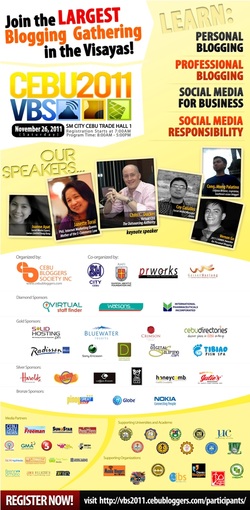 Mandaue City, Cebu November 20, 2011 - After that very successful event last year at the Ilo-ilo City, the Visayas Blogging Summit (VBS) resumes their contest that will surely drawn out all bloggers in the Philippines to join and grabbed the opportunity to showcase their blogging talents and techniques plus a chance to mingle with their fellow bloggers which will be held in Cebu this year. This event was now organized by the Cebu Bloggers Society, Inc. (CBSi), a registered blogging organization in the Securities and Exchange Commission (SEC) and was supported by the Ramon Aboitiz Foundation Inc. (RAFI). The 2nd VBS is now set on November 26, 2011 ranging from 8:00 am to 5:00 pm at the SM City Cebu with an expectation of 300 bloggers around the Philippines to participate. What makes this occasion more delightful are the brilliant speakers that will surely contribute bold knowledge about blogging and give inspiration to the aspirant bloggers. One of the two speakers is Janette Toral, the author of Blogging from Home, DigitalFilipino.com, E-Commerce Workshop E-Book co-author/editor of the Philippine Internet Review: 10 Years of Internet History (1994 – 2004), and Digital Filipino: An E-Commerce Guide for the Filipino. And this year’s keynote speaker is Chris Ducker, the founder of the Live2Sell Group and also the CEO of VirtualStaffFinder.com. He also was recognized as a highly popular blogger, video marketer and podcaster. It is an assurance that the numbers of the contestants will raised, comparing of last year’s happening. It is a big opportunity for those Cebu bloggers to join the competition. In fact some of them had already decided. “It is an honor for me to join this year’s blogging competition. What interests me is that I will be able to showcase my skills as a blogger and then meet and greet my fellow bloggers as well.” he said. “The thoughts that the speakers will share, excites me also.” Everybody should expect to have a rigid competition. The fun and excitement from last year will be doubled. Promising bloggers will be known in this competition. Quality prizes are at stake. Everybody could compete, learn and most of all enjoy.
Our Sponsors Visayas Blogging Summit 2011 is the biggest blogging and social media event of the year. This is the second time this event will happen at SM City, Cebu. Just visit this website http://vbs2011.cebubloggers.com/ for more information.
On this page you can find the Facebook Statistics for Philippines, these numbers are updated on a daily basis that the Facebook Statistics (Advertising) platform gives us for Philippines on the given day.
Number of users on Facebook in Philippines: 16 675 160
Number of male users on Facebook in Philippines: 7 867 560
Number of female users on Facebook in Philippines: 8 711 780
Penetration of Facebook in Philippines to population: 16.69 %
Penetration of Facebook in Philippines to online population: 56.15 %
Avarage CPC in Philippines: $ 0.1
Avarage CPM in Philippines: $ 0.04
Facebook Statistics Philippines User Age Distribution - Facebook Philippines Male/Female User Ratio - Facebook Philippines Male/Female User Growth - Facebook Philippines Age Growth - Facebook Philippines Numbers are estimates based on estimations that the Facebook platform returns us on the certain days.
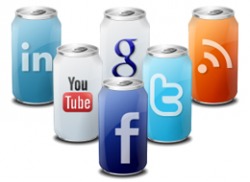 This past week certainly flew by at the speed of Google Fiber. If you didn’t get the chance to take in all the how-tos, app reviews, and business tips found here on Mashable, rest assured, we’ve gathered them into another convenient resource buffet, fully stocked for some all-you-can-read weekend enjoyment. This week’s edition includes some easy ways to make a difference with social media, a look at how video conferencing technology is improving education, some new social strategies for businesses of any size, and much more.
Social Media- Dear Foursquare: This Is Not the Right Time to Sell The location-based network’s extraordinary growth and buzz have caught the eye of Internet heavyweights, notably Yahoo. But if the Foursquare team aims to be a worldwide game-changer like Facebook and Twitter before them, it may be wise to forego the big pay day and keep on truckin’.
- 9 Ways to Do Good With 5 Minutes or $25 Social media makes it easier than ever to make a difference. Whether you can donate a little bit of time, or a little bit of money, check out these easy ways to contribute on the web or on your phone.
- How Social Media Can Effect Real Social and Governmental Change Transparency, open APIs, and free-flowing information are just a few of the ways societies and governments can be improved. This post discusses some important social media campaigns that have made a difference.
- 4 Tips for Tapping Into Twitter Conversations Twitter is so much more than just sending updates and links into the void — it’s the world’s real-time conversation. If you want to take part, heed the advice in this post.
- Exclusive: Tour the “If I Can Dream” Command Center [VIDEO] The interesting new reality/online video hybrid show “If I Can Dream” hit the web on March 2nd, and its impressive production and technical values have turned more than a few heads. This exclusive tour of the show’s HQ sheds some insight on the unique experiment.
- 5 More Ways to Go Green for Earth Day Earth Day may have come and gone, but that doesn’t mean you’re off the environmental awareness hook. Explore these social strategies for going green any time of year.
- How Social Media Helped Travelers During the Iceland Volcano Eruption The Icelandic volcano eruption cost millions in airline revenue and left thousands stranded, but it may have opened new windows of communication. See how travelers and airlines took advantage of social channels to relay vital information that call centers and websites could not.
For more social media news and resources, you can follow Mashable’s social media channel on Twitter and become a fan on Facebook.Tech & MobileBusiness- Why It’s More Important Than Ever To Be an Early Adopter Brand If your business aims to compete at the speed of social media, it’s critical that you be ahead of the curve on the latest trends. This post discusses why.
- HOW TO: Reignite Your Business Network Online Without a viable network, your business probably wouldn’t be successful. If that old Rolodex or business card pile is growing stale, here are some tips for reconnecting online.
- How Recruiters are Using Social Media for Real Results Social media has opened up a whole new channel for recruiters to scout. Here are some tips from the pros who have landed great candidates from the social web.
- How Companies Can Use Sentiment Analysis to Improve Their Business What are people saying about your brand on the web? Is it good or bad? How bad should it get before you intervene? These questions can be answered by employing a sentiment analysis strategy.
- 5 Unique Ways to Use Twitter for Business Contests, customer service, recruiting — it’s all been done on Twitter. If your business is looking for some fresh ideas, be sure to check in here.
- 8 Social Media Strategies to Engage Multicultural Consumers The purchasing power of multicultural consumers is growing exponentially. If you want to reach them, you need to understand how to connect. This post has some tips on using social media to do so.
- 5 Masterminds That Have Redefined Startup Life Along the road of Internet entrepreneurship, there have been thought leaders who took risks, and changed the game for everyone. Check out these five profiles of some of the most influential minds in tech business.
- Why Retention Should Be Your Top Priority in Social Media Marketing If your business model hinges only on how virally your product is shared, you may be missing the bigger picture. For long-term sustainability, customer retention is key.
- Top 10 YouTube Tips for Small Businesses YouTube is a too-often neglected channel for promoting your business. Because it’s free and has incredible reach, it’s the perfect platform for small businesses to set up shop. Here are 10 best practices to note while exploring your web video strategy.
- HOW TO: Add Blogger Outreach to Your PR Plan The opinions of bloggers reach far and wide, making them a great vehicle for your brand. If you haven’t added blogger outreach to your PR arsenal, read these tips for best results.
For more business news and resources, you can follow Mashable’s business channel on Twitter and become a fan on Facebook.Source: Mashable
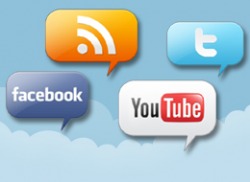 Big changes in the social media landscape this week mean there’s a lot to discuss. These posts highlight all the latest and greatest tools, tips, trends, and strategies for navigating the ever-changing social waters.Included in this week’s edition is some cautionary advice about Facebookand dating, some great mobile app lists for spring, and analysis of Twitter’s brand new advertising model. So kick back, relax, and dedicate some weekend catch-up time to these 20 resources that may have passed you by.
Social Media- 5 Ways Facebook Changed Dating (For the Worse) Facebook is a fabulous way to stay connected, share, and build a business. But when it comes to dating, the social network just makes things complicated. Here are some reasons why it may be best not to entangle romance in your social media lifestyle.
- HOW TO: Create Free Music Playlists Online The only thing better than listening to music online is sharing it. We’ve highlighted some of the best services that let you gather and spread your musical tastes on the web, all for free.
- 10 Fantastic Photoshop Tutorials on YouTube If you’ve always wanted to get a handle on Photoshop, even just the basics, video demonstrations are an excellent resource. There are so many good (and not so good) screencasts available on YouTube (). We’ve highlighted some of the best at every skill level.
- How Journalists are Using Social Media for Real Results There’s no question that social media has dramatically changed the way we report and consume the news. From exclusive Twitpics to breaking stories, we spoke with professional journalists about how they’re using the social web to hone their craft.
- 5 Tips for Creating the Perfect Profile Pic Your face is your brand on the social web. As in person, if you don’t make a good first impression, you may be forfeiting a lasting connection. We checked in with some socially-savvy designers for some easy ways to land a killer social media mug.
- 12 Chatroulette Clones You Should Try The viral success of Chatroulette has sparked numerous clones and parodies hoping to snag onto a coat tail or two. Here are 12 that we found particularly noteworthy.
- Why Banning Social Media Often Backfires Whether in schools, the workplace, or by governmental decree, the effects of banning social media are usually the same — people work extra hard to get around it, and often succeed. This post discusses why resources are better spent fostering constructive social network use.
- HOW TO: Prevent and Report Online Stalking When so much of our day-to-day lives are lived online, the threat of online stalking is an important concern. Here are some easy ways to prevent it from happening, and to report it if you feel you may be a victim.
- 5 Ways to Reduce Social Media Distractions and Be More Productive Even the casual social media user lives in a world of constant inbox and feed bombardment. Here are some tips on avoiding the “reactionary” workflow, and taking charge of your social productivity.
- HOW TO: Maximize Your Content’s Reach on the Social Web For online publishers, it’s no longer a one-destination world. To compete on the social web, content producers need to target their audience’s streams across a variety of networks. This post outlines some important strategies.
- HOW TO: Boost Your SEO with a YouTube Channel While many still focus on the content of their websites, YouTube is an excellent way to push your brand to the top of search results. Check out these tips for maximizing video SEO and driving traffic from your YouTube channel.
For more social media news and resources, you can follow Mashable’s social media channel on Twitter and become a fan on Facebook.Tech & Mobile- 10 Amazing Musical Instrument iPhone Apps The iPhone has some truly outstanding musical instrument offerings, many of which rival their physical counterparts. Here are 10 that really shine.
- 10 Great iPhone Apps for Growing a Garden Spring is finally here, and that means planting season. The iPhone, equipped with the right apps of course, can be a handy reference tool for green thumbs. Check out these 10 apps that can aid your ailing zucchini and plump your tomatoes.
- 5 Amazing Android Apps for Baseball Fans Baseball season is upon us. If you’re a stats nut or a die-hard fan, queue up America’s pastime on your Android device with these five apps, and never miss a pitch.
- 8 of the Best Chrome Extensions for Web Designers Web designers use an arsenal of tools to calculate the perfect color and get their graphics in gear. When those tools are built right into the browser, all the better. We tapped the pros to find out which Chrome extensions are their favorites.
- 4 Key Web Developer Community Resources From the Internet’s earliest days, programmers would congregate in chat rooms and on forums to ask questions, swap code, and brag about their latest software masterpieces. The modern social web has only made these communities stronger. Here are some of the hot spots that any serious programmer should have on his or her radar.
- Six Twitter App Models That Stand a Chance Twitter’s first-ever developer conference, Chirp, saw a flurry of ideas change hands as leading app developers discussed the future of interfacing with the social network. Here are six compelling app models that could change the way we use Twitter in the near future.
For more tech news and resources, you can follow Mashable’s tech channel on Twitter and become a fan on Facebook.Business
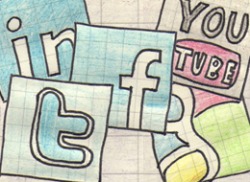 It’s that time again — time to tap into all the tips, tricks, apps, and expert advice that may have flown under your radar this past week. We’ve corralled these must-reads into one handy list for your browsing convenience.
This edition is ripe with valuable info, including the biggest trends to watch on Twitter, some creative advice on keeping your business strategy social, a list of the best new web apps built for Google Buzz, and plenty more. And if you’re in the mood for a bit of web-based entertainment, see below for some fun YouTube compilations and amazing iPad video demos.
Social Media - Facebook vs. Google: The Billion Dollar Battle to Be Your Default Social ProfileBoth of these Internet giants are vying to become your main destination for social, search, and shopping. This posts discusses the seeds they are sowing now in the hopes of future web dominance.
- 5 Simple Social Design Tips From the MastersGood design is a critical component of the social web. We asked the experts for some simple advice that can make or break your next social design.
- 5 Big Twitter Trends to Follow Right NowDay-to-day Twitter trends are interesting to follow, but it’s important to step back and take a look at where the social network is headed, and the challenges it will face in the future. This post takes a meta look at the state of the Twitterverse.
- 10 Amazing Magic Trick Videos on YouTubeYouTube is home to some amazing content, and the prestidigitation department is no exception. Check out these ten close-up and street magic tricks, each of which packs a solid wow-factor, and will leave you wondering, “How’d they do that?”
- Top 10 Funny Dog Videos on YouTubeIf there’s one thing the Internet is good for, it’s funny pet content. This post rounds up some premium canine hilarity from YouTube that you simply cannot miss.
- 5 Free Ways to Identify that Song Stuck in Your HeadThe days of agonizing over those relentless and unidentified melodies are over. The Internet, in all its musical genius, offers up a handful of ways to pinpoint the tune that simply won’t let you go.
- Why Chatroulette Is More Than Just PenisesThe stunning viral runaway success of Chatroulette is often overshadowed by the “naughty bits” that are so prevalent on the service. This post delves deeper into the trend to discuss what the phenomenon of random, anonymous video chat means for the greater web culture.
- 12 Fresh Web Tools for Getting the Most Out of Google BuzzThough still in its infancy, Google Buzz is quickly gaining traction with the help of eager developers who have pounced on the network’s open API. If you’re looking to integrate, connect, and spread your Buzz around the web, check out these 12 useful tools.
- 5 Ways to Go Green for Earth Day with Social MediaThe social web is the perfect medium for spreading the word about an important cause. This post offers up five ways to get involved with the environmental movement, just in time for Earth Day.
- 15+ Great Ways to Find Web Design and Development WorkFor web designers and developers looking to take on new projects, the Internet offers a great number of online resources that can help them find work. Here are more than 15 places for web creatives to land gigs.
For more social media news and resources, you can follow Mashable’s social media channel on Twitter and become a fan on Facebook.
Mobile - 10 Essential Money-Saving iPhone AppsThough the iPhone is a pricey piece of hardware, it could pay for itself in the long run if you use it to find deals and live more frugally. This post examines 10 essential iPhone applications for living the frugal life.
- How 5 Brands Are Mastering the Game of FoursquareFoursquarecould easily be mistaken for a frivolous mobile application with little to no value for businesses, but here are five businesses that are proving the value of location-based social media apps.
For more mobile news and resources, you can follow Mashable’s mobile channel on Twitter and become a fan on Facebook.
Tech - 10 Amazing iPad App Video DemonstrationsIf you haven’t gotten your iPad yet, but you’re jonesing for your Apple app fix, check out these truly awesome video demos that showcase the power and versatility of the new tablet device.
- 10 Insanely Great iPad Apps We Can’t Wait to UseFor those of you that have gotten an iPad, has it lived up the hype? Which apps are you enjoying the most? Here is a list of the 10 iPad applications were most looking forward to checking out.
- 10 Must-See Google Street View SightingsYou can’t drive around photographing the entire world without running across at least a few oddities. Check out this list for some strange and hilarious images captured by the Google Street View car on its quest to virtualize the globe.
For more tech news and resources, you can follow Mashable’s tech channel on Twitter and become a fan on Facebook.
Business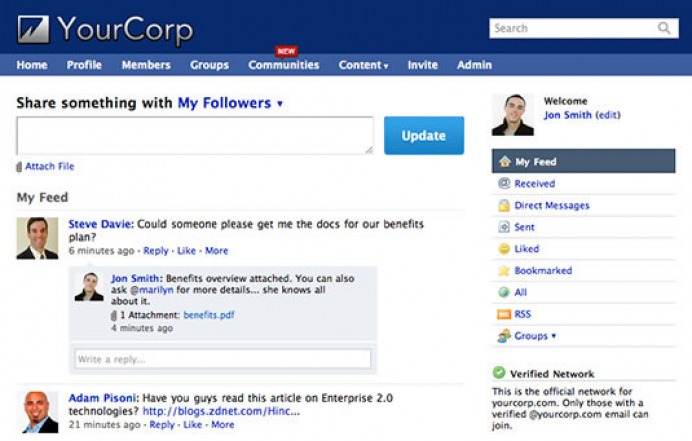
Source: http://mashable.com/2010/04/03/social-media-resources-recap-3/
Big List of Social Bookmarking and Networking Sites
This list was originally from www.feedbus.com/bookmarks but I've added more to it, and I encourage you to do the same.
1 - http://slashdot.org (PR9)
2 - http://digg.com (PR8)
3 - http://technorati.com (PR8) - Blogs Only
4- http://www.furl.net (PR7)
5 - http://www.backflip.com (PR7)
6 - http://www.hugg.com (PR7)
7 - http://www.mixx.com (PR7)
8 - http://ma.gnolia.com (PR7)
9 - http://www.connotea.org (PR7)
10 - http://mystuff.ask.com (PR7)
11 - http://www.reddit.com (PR7)
12 - http://www.dzone.com (PR7)
13 - http://www.folkd.com (PR7)
14 - http://multiply.com (PR7)
15 - http://www.searchles.com (PR6)
16 - http://de.lirio.us (PR6)
17 - http://www.dotnetkicks.com (PR6)
18 - http://www.bloghop.com (PR6)
19 - http://www.plime.com (PR6)
20 - http://www.bibsonomy.org (PR6)
21 - http://www.clipclip.org (PR6)
22 - http://linkagogo.com (PR6)
23 - http://www.spurl.net (PR6)
24 - http://www.zlitt.com (PR6)
25 - http://www.indianpad.com (PR6)
26 - http://www.tumblr.com (PR6)
27 - http://www.myvmarks.com (PR5)
28 - http://www.listible.com (PR5)
29 - http://www.bringr.com (PR5)
30 - http://faves.com (PR5)
31 - http://www.linkinn.com (PR5)
32 - http://spotback.com (PR5)
33 - http://www.mylinkvault.com (PR5)
34 - http://my.xilinus.com (PR5)
35 - http://linkatopia.com (PR5)
36 - http://www.bumpzee.com (PR5)
37 - http://www.bookmarktracker.com (PR5)
38 - http://www.healthranker.com (PR5) (Only for health retated websites)
39 - http://www.a1-webmarks.com (PR4)
40 - http://www.wirefan.com (PR4)
41 - http://www.bmaccess.net (PR4)
42 - http://blogmarks.net (PR4)
43 - http://www.diigo.com (PR4)
44 - http://www.oyax.com (PR4)
45 - http://socialogs.com (PR4)
46 - http://www.contentpop.com (PR3)
47 - http://www.pixelmo.com (PR3)
48 - http://www.memfrag.com (PR3)
49 - http://getigadget.com (PR3)
50 - http://www.jumptags.com (PR3)
51 - http://www.plugim.com (PR3)
52 - http://www.syncone.net (PR3)
53 - http://postonfire.com (PR3)
54 - http://www.business-planet.net (PR3)
55 - http://www.hatedorloved.com (PR3)
56 - http://www.bookmarks.com (PR3)
57 - http://www.yattle.com (PR2)
58 - http://www.kapely.net (PR2)
59 - http://www.givealink.org (PR2)
60 - http://totagit.com (PR2)
61 - http://socialblink.com (PR0)
62 - http://wigleytagz.com (PR0)
63 - http://buzztagz.com (PR0)
64 - http://youtagz.com (PR0)
65 - http://space-ed.com (PR0)
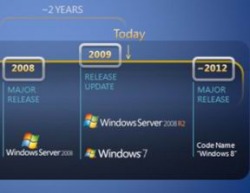 The folks at Microsoft Kitchen dug up some cool quotes from Microsoft employees about the upcoming Windows OS, currently codenamed Windows 8. Though it does bring up painful memories of what was promised about Vista (the marketing campaign, you may remember, was called “the wow starts now”), Microsoft did partially redeem itself with Windows 7, so we can put some (if not all) trust in what’s said about the next version.First, John Mangelaars, regional VP of consumer and online at Microsoft EMEA, simply said that Windows () 8 will be “mind-blowing.” Doesn’t really reveal much, but OK, we can set our expectations to “unreasonably high” if that’s how Microsoft wants to play this. Another quote, this time from an unknown employee, tells us a little bit more: “So what are our plans for this next version…The minimum that folks can take for granted is that the next version will be something completly different from what folks usually expect of Windows – I am simply impressed with the process that Steven has setup to listen to our customers needs and wants and get a team together than can make it happen. To actually bring together dozens and dozens of teams across Microsoft to come up with a vision for Windows.next is a process that is surreal! The themes that have been floated truly reflect what people have been looking for years and it will change the way people think about PCs and the way they use them. It is the future of PCs…” So besides “mind-blowing”, we can now add “surreal,” “the future of PCs” and “completely different”. I’m not exactly sure I want to enter an altered state of mind upon launching my brand new Windows 8 PC for the first time, but I agree it’s time for something completely different. Because, you know, Windows 7 wasn’t really all that different from Vista…
Sinofsky's Windows plan: More data, less testosterone LOS ANGELES--While some have criticized Steven Sinofsky for being tight-lipped, the Windows boss insists that he is being prudent, not secretive. "Everybody wants to know what's coming and what's next." But, he said, talking too soon, too early is actually a bad thing that just leads to frustration. "You reacting to some nightly developer build isn't really productive to anybody," Sinofsky said in an interview at this week's Professional Developers Conference. Sinofsky says that people don't want to show up to a restaurant and watch a potato being peeled and taste it half-cooked. For the same reason, he prefers to not talk about things until they are well, fully baked. "It's hard to imagine what else you want to see while it's in progress," Sinofsky said. "I don't want to see the daily cuts of a movie. I want to see what the director thought at the end." As a result, Microsoft didn't show Windows 7 until last year's Professional Developers Conference, just a year before the product was released. That's in sharp contrast to the prior version of Windows, which was first shown as Longhorn back in 2003. It ultimately suffered through numerous delays and significant changes before being released as Vista. 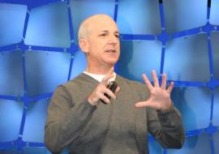 From early indications, Sinofsky would appear to be on to something. While Vista was largely panned by critics and shunned by businesses, Windows 7 has thus far had strong early sales and gotten high marks from reviewers. It's some of the same philosophy Sinofsky took in his earlier days, when he led development of Microsoft's Office franchise. "Normal people have stuff to do," he said. That's also why he doesn't really look for public feedback until the software is largely done. "We don't want feedback on a screenshot," he said. Sinofsky shifted from Office to Windows in March 2006 and earlier this year added responsibility for the business side of Windows as well, becoming the unit's president.
He said his philosophy toward Windows really boils down to a single word--responsibility. "There's not another project in software to work on that a billion people use and we take that really, really seriously in the hallways of our dev team," he said. Sinofsky also isn't one to be swayed by emotional arguments for or against a feature. If you want his attention--show him the numbers. He said he wants feedback, but he wants that feedback to "be based on data and not assertions or opinions or anecdotes." During his PDC talk on Wednesday, he referred to the other approach as "testosterone-based engineering." "It turns out we did a lot of things by that method," Sinofsky said. Often times, decisions on which features to include in the next version of a product were made that way. People, Sinofsky said, would basically just ask their friends. "Let me get this straight," Sinofsky said. "You are going to ask your 10 friends who all go to Fry's and build their own gaming machines and that's going to be the way we decide which features go in the product?" That, he said, "seems a little homogeneous. It seems a little limited in its reliability." But these days, Microsoft has a better option, gathering lots and lots of data from real-world use. Quite often, he said, the data will show things that might not be intuitive to Redmond's engineers. As an example, he showed a graph at the conference that showed the huge variety of graphics resolutions that Windows users were operating at, including a significant number with VGA-resolution displays. Folks in Redmond initially assumed they didn't really need to worry about such low-resolution screens. True to form, Sinofsky was emphatically silent when my questions drifted toward the future. I asked whether we might see a beta of Internet Explorer 9 at Mix and he literally just sat there silent until I asked the next question. Later on in the interview, the mere mention of Windows 8 got the same stone-faced glare. "I won't ask you what's in Windows 8, but can you talk at all (about it)? You mentioned that you are a few weeks into designing IE 9," I said. "Are you a similar amount into Windows 8?" Silence. More silence. "I didn't say any of the words--Windows 8--those were all your words," he said. "Next." Sinofsky did have some interesting things to say when I asked for his take on competitors like Google and Apple. "You have to take it very seriously," he said of the competitors. "That's always, always true in the software world. In the software world it doesn't take a lot to have a dramatic shift in how people perceive you or how they act. It's just very important no matter what your perceived or real or measured share is at one moment, it doesn't take a lot to change it down the road."
 Brian Solis is a principal at new media agency FutureWorks, and author of the upcoming book, Engage. You can connect with him on Twitter or Facebook.One of the greatest challenges I encounter today is not the willingness of a brand to engage, but its ability to create. When blueprinting a social media strategy, enthusiasm and support typically derails when examining the resources and commitment required to produce regular content. Indeed, we are programing the social web around our brand hub, which requires a consistent flow of engaging and relevant social objects. Social objects are the catalysts for conversations — online and in real life — and they affect behavior within their respective societies. They are our tweets, our Flickr photos, YouTube videos, Facebook updates and events, Delicious links, FourSquare check-ins, and blog posts. But once we introduce a social object, we must be ready to back it up with additional relevant content, and create a publishing calendar programmed specifically for each network on which we maintain a presence.
Brands Become Their Media There’s a saying in theater: A big part of acting is reacting. This is especially true when we consider how many individuals, brands, and organizations engage on the web today. Instead of seeking inspiration and direction from those around us however, we simply react to activity, which may or may not benefit us in the long run.The democratization of publishing and the equalization of influence allows us to create and connect with a wider reach. Everything starts with a mission, and is fortified by the content we create.
Among the most valuable resources we procure through dedicated publishing is good will, social capital, and influence. It comes at a price however: The cost of production, distribution, and support. In the end, you get out what you put in. The investment represents time, money, creativity, and passion.
Thus, we not only become our media — through production and engagement, we can become influential.
Productive Social Media Must Be EarnedWhile establishing a presence is elementary, captivating audiences is artful. In the near future, brands and organizations will create new or augment existing roles for editors and publishers to create timely, relevant, and captivating content on all social media channels. This work is in addition to the other reactive and proactive social media campaigns that are already in progress. A strategic editorial calendar should blend video, audio, imagery, text, updates, and other social objects and networks to reach, inspire, and galvanize communities. Paragraph. Earned, Paid, and Owned MediaIn media, there are several channels that populate and shape perception — earned, paid, and owned media. Each requires a dedicated management system that actively creates, monitors and stimulates strategic movement. Recently, Sean Corcoran, an analyst at Forrester Research, published a detailed post that describes the differences between earned, paid and owned. He clarifies the roles for brands who undertake the responsibility of embracing new media. Dave Fleet, a thought leader in new media and public relations, also visualized Corcoran’s thoughts through a series of graphics that represent the social media ecosystem. As Corcoran points out in his recent report: “Increasingly, interactive marketers are being asked to manage a wide range of paid and unpaid marketing communication —- despite the fact that many marketing departments are still organized around traditional paid marketing channels. All types of online media (whether ‘earned,’ ‘owned,’ or ‘paid’) can play specific roles in meeting marketers’ objectives —- especially when seamlessly working together. To find the right balance between these types of media, marketers should take stock of their resources, listen for the impact of earned media, look for opportunities to shift short-term paid media to the role of catalyst, and begin to build out a solar system of long-term owned media touchpoints.” In other words, paid, earned and owned media require thoughtful programming and targeted distribution and must be linked to a systematic review of behavior and activity that surrounds each object. And, the analysis of activity and ultimately the end result should play a monumental role in the creation of future publishing and social activation. Corcoran uses the word “touchpoint,” which by standard definition, refers to any point of contact between a buyer and a seller. Touchpoint is part of the greater opportunity here. But more importantly, these touchpoints require direction and the establishment of a path that offers a complete experience — a beginning, a middle, an end, and a reward. These experiences are definable by paid, earned, and owned media. In media, there are several channels that populate and shape perception — earned, paid, and owned media. Each requires a dedicated management system that actively creates, monitors and stimulates strategic movement. Recently, Sean Corcoran, an analyst at Forrester Research, published a detailed post that describes the differences between earned, paid and owned. He clarifies the roles for brands who undertake the responsibility of embracing new media. Dave Fleet, a thought leader in new media and public relations, also visualized Corcoran’s thoughts through a series of graphics that represent the social media ecosystem. As Corcoran points out in his recent report: “Increasingly, interactive marketers are being asked to manage a wide range of paid and unpaid marketing communication —- despite the fact that many marketing departments are still organized around traditional paid marketing channels. All types of online media (whether ‘earned,’ ‘owned,’ or ‘paid’) can play specific roles in meeting marketers’ objectives —- especially when seamlessly working together. To find the right balance between these types of media, marketers should take stock of their resources, listen for the impact of earned media, look for opportunities to shift short-term paid media to the role of catalyst, and begin to build out a solar system of long-term owned media touchpoints.” In other words, paid, earned and owned media require thoughtful programming and targeted distribution and must be linked to a systematic review of behavior and activity that surrounds each object. And, the analysis of activity and ultimately the end result should play a monumental role in the creation of future publishing and social activation. Corcoran uses the word “touchpoint,” which by standard definition, refers to any point of contact between a buyer and a seller. Touchpoint is part of the greater opportunity here. But more importantly, these touchpoints require direction and the establishment of a path that offers a complete experience — a beginning, a middle, an end, and a reward. These experiences are definable by paid, earned, and owned media. Paid media represents the visibility we purchase, such as display ads, paid search, and sponsorships. When paired with owned and earned media programs, paid media can complement, reinforce, and polish a brand’s voice, directives, mission, and stature. While many argue over the future and fate of advertising, what’s clear is that online paid presences can benefit initiatives where action and experiences are defined and promoted through the click path. Current trends reflect a shift away from branding programs and place emphasis on sparking desired activity, empowering viewers and their social graph to share in the experience all in ways that measure the cost per action. Earned media is the result of our owned, paid, and participatory media programs and is reflected in the blog posts, tweets, status updates, comments, and ultimately actions of our consumers, peers, and influencers. Earned media is linked to owned media campaigns as well as proactive initiatives that attempt to incite viral and word-of-mouth activity. Garnered visibility is also tied to communications and public relations programs as they continually seek to gain the attention of reporters, bloggers, analysts, and influencers who can drive awareness and behavior. This isn’t a one way street however. Success is absolutely conditional on the techniques and methodologies that inspire dedicated programs focused on outreach, relations, and hopefully the engendering of productive and mutually beneficial relationships. Crowd-powered visibility also merits an official and devoted listening and response initiative to ensure that each respective community aligns with the mission. Participatory media is an extension of earned and owned media. It takes the shape of a hosted hub where brand representatives and our communities can interact and collaborate. Good examples of this are Dell’s IdeaStorm and Starbucks’ “ My Idea” network, which resemble branded wikis designed to elicit responses and establish community-focused governances. Participatory media equalizes the balance of power, providing a dedicated platform the gives voice to the consumer and a channel for their ideas. Sponsored media is a new category that fuses owned, paid, and earned media. Sponsored media is championed by companies like Izea, Ad.ly, and Twittad, among others, and is creating a new medium for packaging messages through trusted voices within highly visible and social channels. Sponsored media can take the form of paid tweets, blog posts, appearances, and featured objects on targeted profiles. And, whether you agree or disagree with the idea, the reality is that it works, and seems to benefit all parties involved, from the brand, to the paid affiliates, to their communities. In fact, Forrester’s Josh Bernoff and Sean Corcoran shared their thoughts on why sponsored media is worthy of consideration. Sponsored objects fuse earned, paid, and owned media, as technically: 1) The messages are owned; 2) The voices are paid, and; 3) With more thoughtful approaches, the responses within targeted communities can inspire a positive wave of earned media. Disclosure: My company works with Ted Murphy, Founder/CEO of izea.com. Influence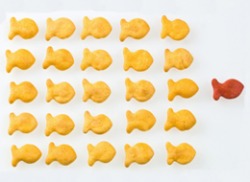 As media, brands earn prominence and hopefully influence as rewards for contributing meaningful content. On Twitter, brands can earn legions of loyal and responsive followers, who in turn become brand advocates and ambassadors, extending the messages, mission and purpose of the brand to their followers as well. On Facebook, brands can cultivate vibrant and dedicated communities where interaction inspires increased responses — each reverberating across new social graphs. On Ustream and YouTube, we can earn global audiences of viewers who tune in to watch our programming and interact with brand representatives in a live community that spills over other social networks. And of course, our blog is more important than we may realize. Through our posts, we can establish a strong alliance of subscribers who hope to learn new things and participate in the discussion of a brand’s future.As Tom Foremski points out, we have the ability to earn noteworthy, equal, and in some cases, greater influence than those authorities whom we’ve relied on over the years to help us reach greater audiences and communities. As influence is equalized, our ability to earn presence and relationships is derived from how we program, manage, and participate in all forms of media. And, it is through a balance of media and engagement that we also establish the foundation for affinity. People align with movements they can believe in, and it is the human, intellectual, and financial investment in genuine content that defines experiences, and hopefully one day earns the significance your brand deserves.
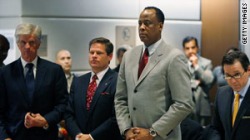 Los Angeles, California (CNN) -- With Dr. Conrad Murray officially charged in Michael Jackson's death, the Los Angeles coroner has released the autopsy report that said it was a homicide.
The 51-page report gives vivid detail supporting last August's conclusion that Jackson died from "acute propofol intoxication."
Murray told investigators he gave Jackson propofol, a powerful anesthetic, to help him sleep.
An anesthesiology consultant hired by the coroner to review the findings of the investigation said that "there are NO reports of its use for insomnia relief, to my knowledge," according to the report.
"The only reports of its use in homes are cases of fatal abuse (first reported in 1992), suicide, murder and accident," Dr. Selma Calmes wrote.
"The standard of care for administering propofol was not met," she wrote.Autopsy report lists details of Jackson's death (PDF)
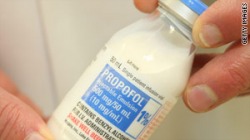 Murray, who was with Jackson when he died, is charged with involuntary manslaughter by acting "without malice" but also "without due caution and circumspection."Jackson, who hired Murray as his physician while he prepared for what was to have been a series of comeback concerts, called the doctor to his rented Holmby Hills mansion last June 25 at about 1 a.m., the report said.
"
 The decedent complained of being dehydrated and not being able to sleep," it said.
A police affidavit previously made public said that the doctor told investigators he gave Jackson three anti-anxiety drugs to help him sleep that morning.
Murray told them he had been treating Jackson for insomnia for six weeks at the time of the singer's death. He had given Jackson 50 milligrams of the sedative propofol diluted with the local anesthetic lidocaine every night via an intravenous drip.
The doctor told police he was worried that Jackson was becoming addicted to the drug and was trying to wean him off it.
During the two nights before Jackson's death, Murray said, he put together combinations of other drugs that succeeded in helping Jackson sleep.
Coroner investigators first examined Jackson's body at UCLA Medical Center less than three hours after he was pronounced dead. They used the picture on his California driver's license to confirm it was the singer.The decedent's head hair is sparse and is connected to a wig. The decedent's overall skin has patches of light and dark pigmented areas," an investigator wrote.
Jackson suffered permanent hair loss when his scalp caught fire while he was taping a Pepsi commercial in 1984. He was known to wear wigs in public after the mishap.
Jackson's dermatologist, Dr. Arnold Klein, told CNN last year that he had treated Jackson for vitiligo, a skin condition that causes irregular patches of white skin.
Jackson weighed 136 pounds and was 69 inches tall, according to measurements taken during the autopsy the morning after his death.
The front of Jackson's scalp, from his hairline, was tattooed with dark ink over "frontal balding." His eyebrows and the border of his eyelids were also tattooed.
"There is a pink tattoo in the region of the lips," the report said.
The autopsy report noted several broken ribs, apparently suffered during the efforts to revive him.
The autopsy also said that Jackson's left lung was affected by "widespread respiratory bronchiolitis and chronic lung inflammation" that could have had an "adverse health effect." But it was not "considered to be a direct or contributing cause of death," a pathologist hired as a consultant concluded.
Calmes, the consultant, concluded that propofol was administered without the recommended equipment being present, including a "continuous pulse oxymeter, EKG and blood pressure cuff."
Use of the anesthesia requires "full patient monitoring by a person trained in anesthesia," she wrote. Murray is a cardiologist.
"There was no evidence of an infusion pump for control of an IV infusion. No monitors were found at the scene; a blood pressure cuff and portable pulse oxymeter were recovered from a closet in the next room," Calmes wrote.
The consultant said supplemental oxygen "should always be delivered" when propofol is being administered.
An oxygen tank was found near where Jackson slept, but it was empty when the coroner investigator checked it two weeks after Jackson died, Calmes said.
"Multiple opened bottles of propofol were found with small amounts of remaining drug," Calmes said. "A used bottle should be discarded six hours after opening, to avoid possible bacterial growth."
"The levels of propofol found on toxicology exam are similar to those found during general anesthesia for major surgery," Calmes said.
During such surgery, any patient would be "intubated and ventilated by an anesthesiologist," she said.
The consultant's report said the level of lorazepam, a powerful anti-anxiety agent found in Jackson's body, "would have accentuated the respiratory and cardiovascular depression from propofol."
An involuntary manslaughter charge against a physician is a "very unusual thing to see," according to Bruce Cranner, a New Orleans defense lawyer in medical cases.
Cranner said prosecutors may have a "pretty good case" against Murray if they can show he did not take proper precautions when giving Jackson the propofol.
Washington (CNN) -- Police in China shut down what officials think was the largest training Web site for computer hackers, local media said.
The Black Hawk Safety Net offered lessons on cyber attacks and sold Trojan software, which allows outside access to a computer when remotely installed, media reports said.
Police arrested three people who ran the Web site and charged 100 to 200 yuan ($14 to $29) for lessons, the China Daily newspaper said.
Established in 2005, the site had recruited more than 12,000 paid and 170,000 free members and collected more than 7 million yuan ($1.02 million) in membership fees, the reports said.
Authorities were tipped off to its existence while investigating a cyber attack in 2007. Some suspects arrested in that case were members of Black Hawk.
The suspects in the Black Hawk case were arrested under a law revised last year in response to cyber crimes.
China says hackers caused 7.6 billion yuan ($1.02 billion) in losses in the country last year.
Last month, online search giant Google threatened to pull out of China, saying Chinese hackers had penetrated some of its services in a politically motivated attempt at intelligence gathering.
China's information information technology ministry called the accusations of government involvement "groundless."
The Chinese government has said that the Google case is a business dispute and should not affect relations between Beijing and Washington.
Last month, foreign correspondents in at least two Chinese bureaus of news organizations had their Google e-mail accounts attacked, with e-mails forwarded to a mysterious address, according to the Foreign Correspondents' Club of China.
|


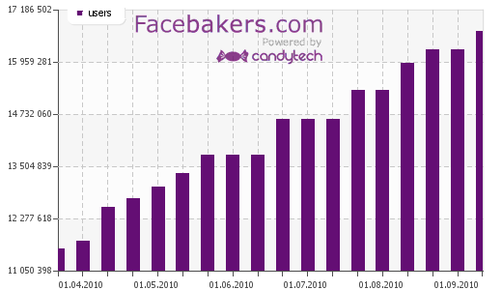
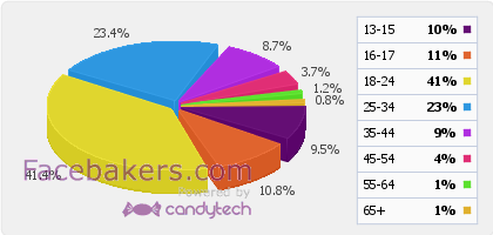
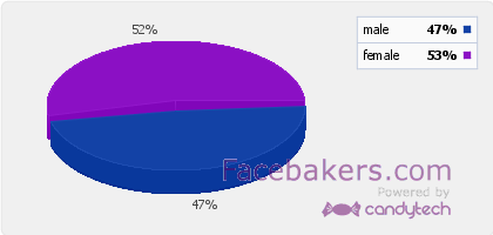

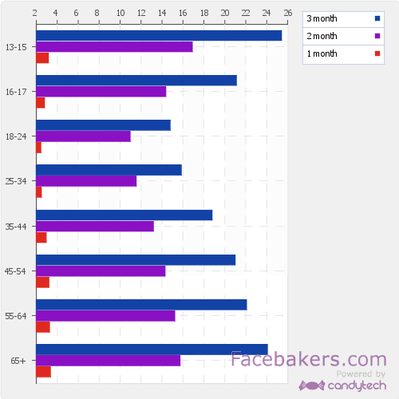






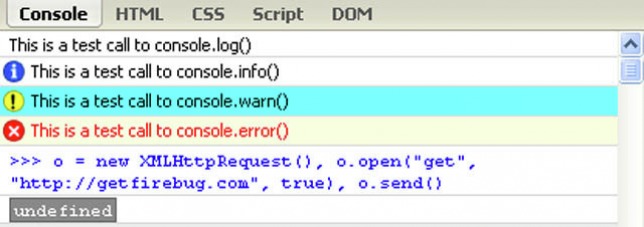
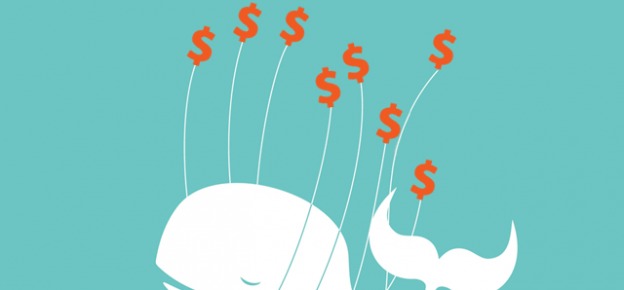









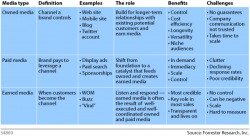
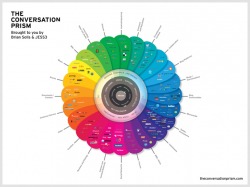




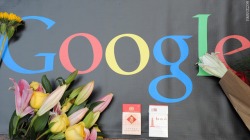

 RSS Feed
RSS Feed